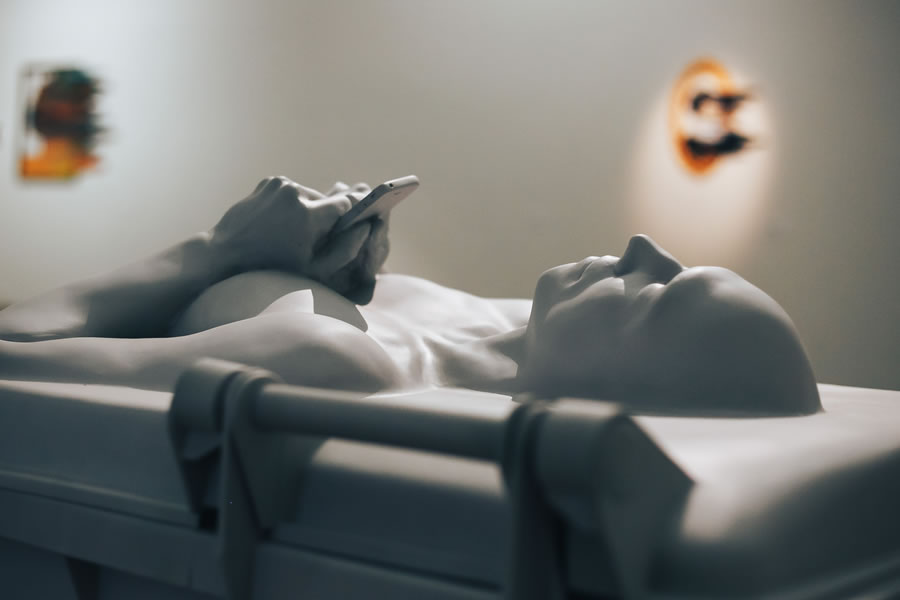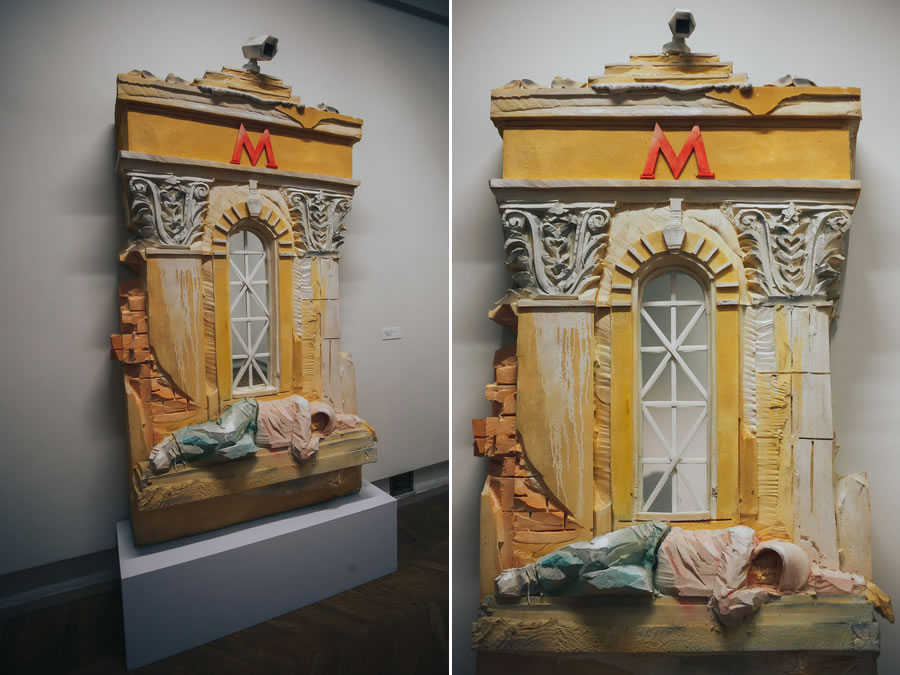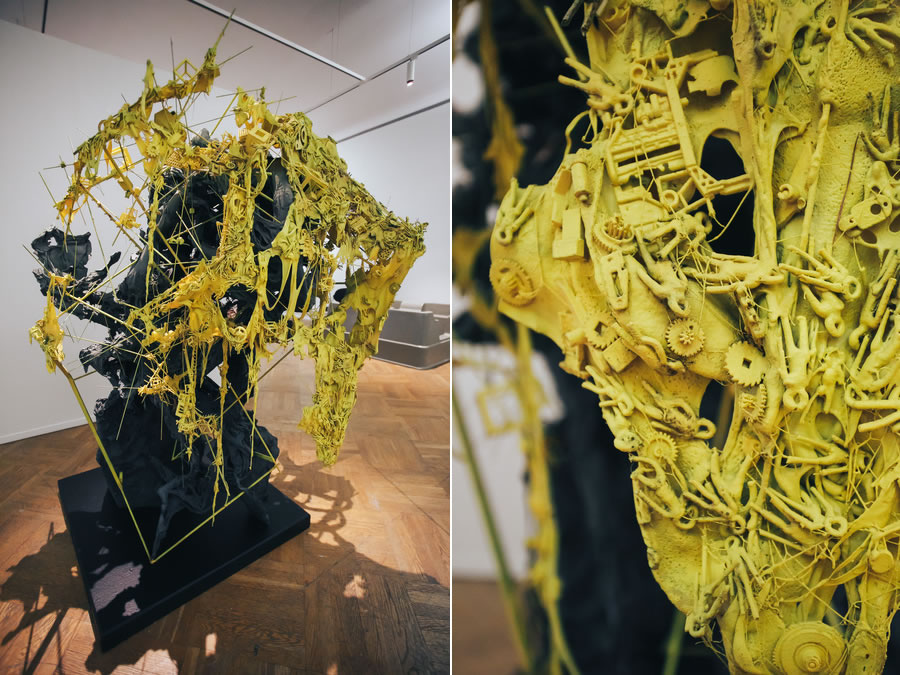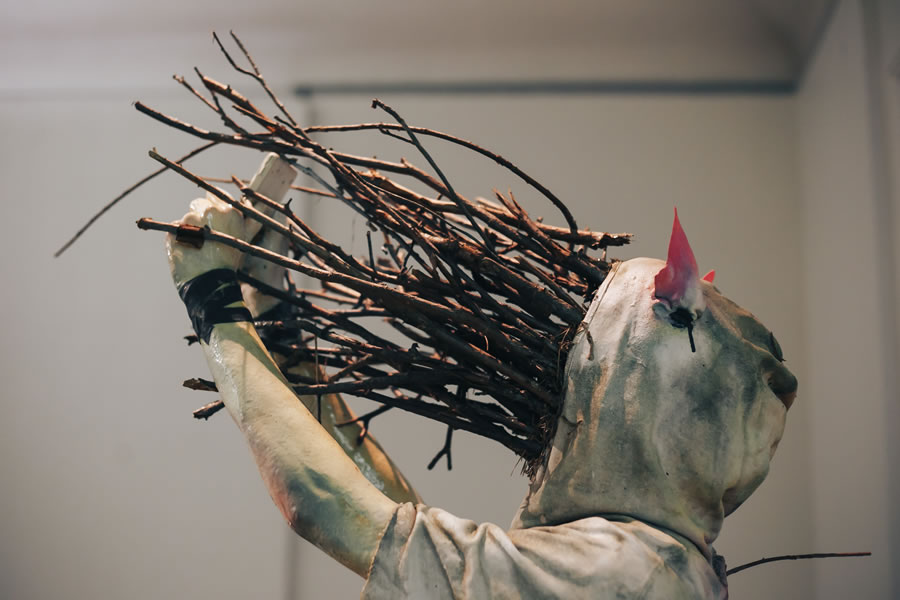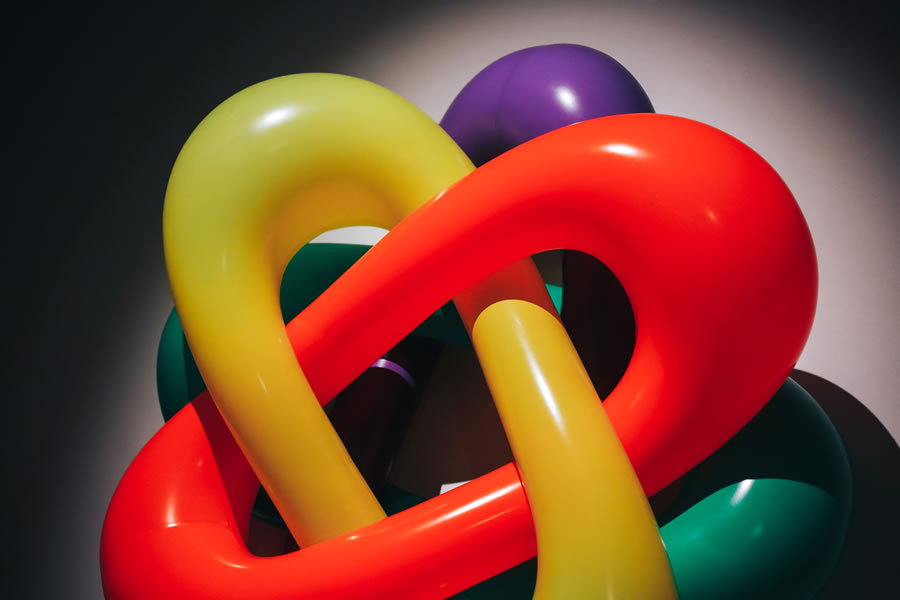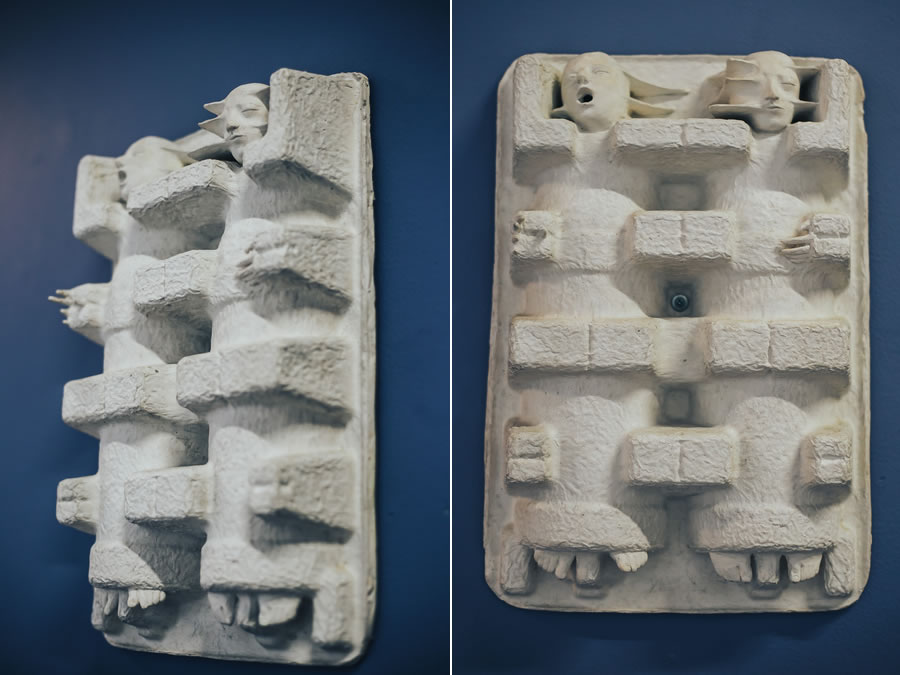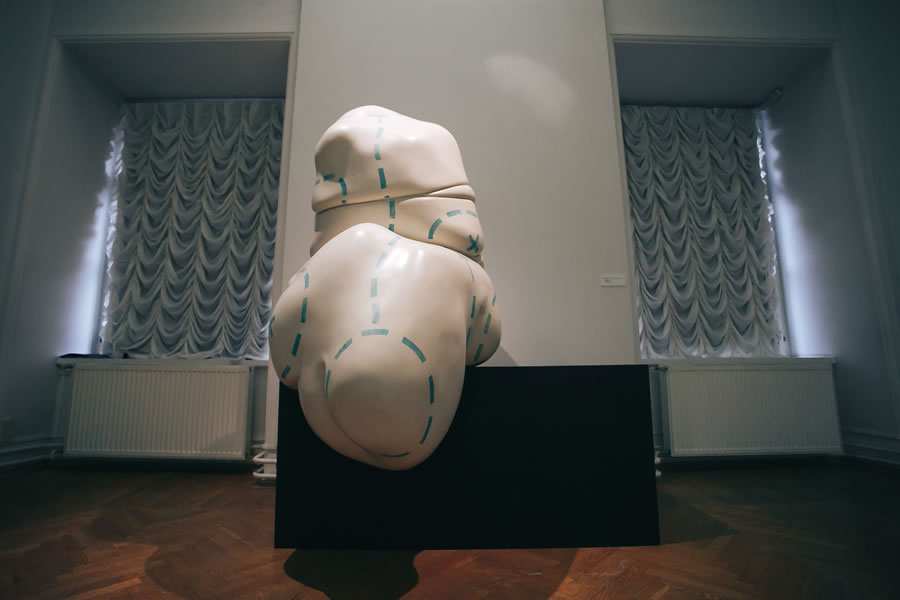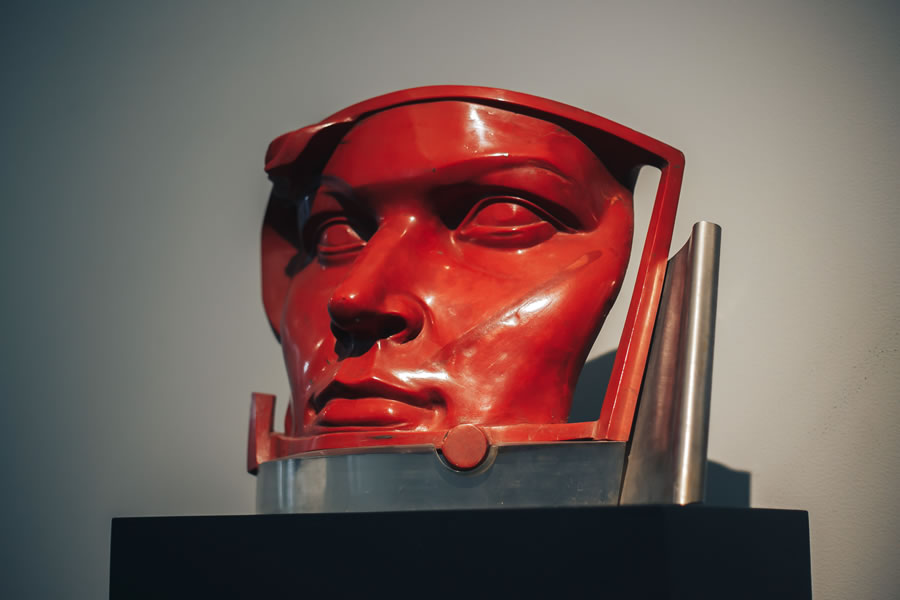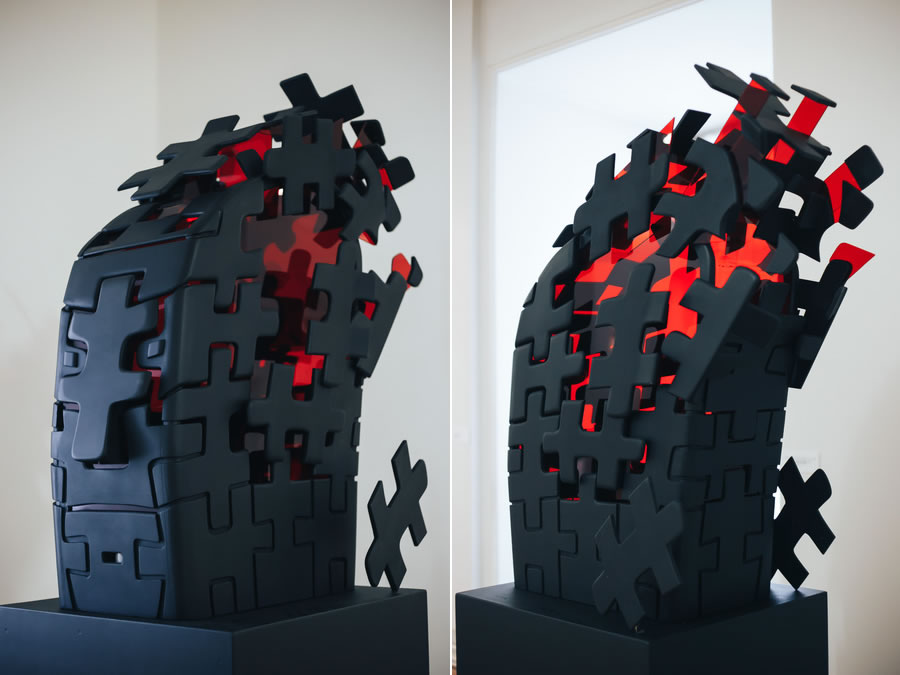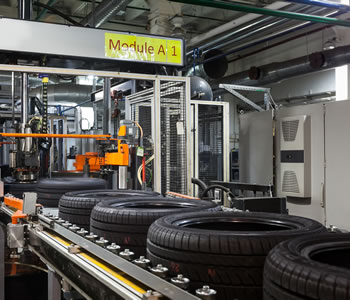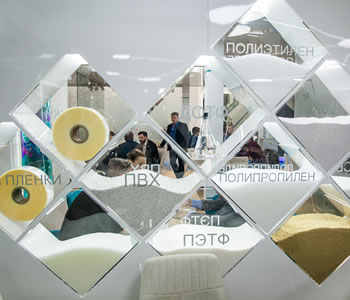The State Russian Museum’s Plastic Mass exhibition shed light on Russian artists and sculptors who make use of polymers in their work. It featured sculptures made from plastics, latex and foam rubber. The organisers believe that the use of such materials pushes the boundaries of creative expression.
St Petersburg's State Russian Museum hosted an exhibition titled, rather aptly, Plastic Mass, as it was the first of its kind to feature a truly varied selection of late 20th and 21st century art pieces crafted with various polymer materials. There were more than 70 works by thirty Russian artists, among whom were well-known and influential figures in contemporary art.
Plastics were a hot topic in the 20th century, Artists have gradually come to consider it a new material to work with.
The All Chemistry magazine caught up with the exhibition’s organisers – Yekaterina Nikolayeva and Pavel Belsky – to find out more about the eye catching event and the role of polymers in contemporary art.
How did the idea come about?
Initially, we wanted it to be an exhibition of sculptures made fr om unconventional materials, but upon further research decided to narrow our focus. Plastics were a hot topic in the 20th century, and gradually became a new material for artists to work with. They used all kinds of polymers, from rubbers to plasticrete. As we were deciding on future exhibits, we realised they could be grouped according to several themes.
For example, many artists explore the topic of future in their work, but they approach it in different ways. Some think the humanity is on the verge of a self-inflicted tragedy, perhaps a psychological crisis brought about by virtual reality and the erosion of identity. Others remain hopeful for what's to come. Both pessimistic and optimistic pieces are united by an element of science fiction.
Different creators have different modi operandi. The Recycle group utilises casting, while Dmitry Kawarga assembles his pieces by hand.
Enlightener. Recycle Group, 2014. Cast plastic, light box.
This kind of art is valued very highly nowadays, and not every museum can afford to buy it.
Does the museum’s collection include polymer pieces?
Of course, we can see an example of this in Konstantin Simun’s found object installation. (He is famous for creating a large-scale Broken Ring monument in the mid-sixties). Throughout his entire life, he has worked with traditional materials, always looking for ways to put a twist on his pieces. One example of such ingenuity is the incorporation of bricks or welded iron into his creations. After he moved to the US, his financial situation, coupled with a new environment, led to him collecting various plastic items (bottles, canisters) and making them into pieces of art. This did not detract from his creative voice, but rather became an evolution of his art.
We also have exhibits made with plexiglass, rubbers, etc. The majority of them came from galleries and private collections. This kind of art is valued very highly nowadays, and not every museum can afford to buy it.
What is the lifespan of, say, plastic sculptures?
This is something artists have yet to figure out. Take Sergey Shekhovtsov – a unique artist who, instead of going abstract, makes foam rubber sculptures in a realistic and quite traditional style. It is as if his works are carved out of stone. At first, he used conventional foam rubber that lasts from 15 to 50 years. But recently, he has been making a move to a firmer, more durable modern form of the material. , He is also utilising a special coating to further boost its longevity.
Metro. Sergey Shekhovtsov, 2007. Foam rubber, acrylic.
The various types of plastics in the late 80s made art much more accessible for creators.
Which themes emerged when you were putting the exhibition together?
The first hall ended up carrying an apocalyptic vibe, full of sombre works ruminating both on the spiritual crises of today, and those that are yet to come. For example, Dmitry Kawarga’s polymer piece Title doesn’t matter depicts a catastrophic man-made explosion of grey and yellow that betrays memories of a past life.
Title doesn't matter. Dmitry Kawarga, 2015. Polymers, metal.
The Catcher, a piece by CrocodilePOWER art group, also paints a bleak picture:a man holds a mobile phone as vegetation is sprouting from his face. This is both a riff on fairy-tale motifs and a reference to virtual reality.
The Catcher. CrocodilePOWER, 2015. Fibreglass, wood, metal, moss.
In the past, the sculptor was limited to traditional materials. Nowadays, however, anyone can take some plasticrete and make a sculpture at home, create things even out of plastic bags.
The second hall is all about the abstract. One of the featured works is Daria Surovtseva's Throne – a reflection on power and narcissism. Due to her long and varied career, starting out in decorative and applied arts, and later working with porcelain, she works with a wide range of different materials, which she then combines with plastics.
The same room houses Andrei Molodkin’s Black Square, made out of plexiglass, plastic, metal and even...oil, which the artist calls society's lifeblood and the driving force behind the economy. Another eye-catching piece is a relief artwork by Vladimir Davydov made with black plastic bags. The creativity of the artist comes through in his ability to transform a mundane object of everyday life into a work of art.
Next stop – virtual reality. First exhibit – UserPic by Aristarkh Chernyshev. It would not be entirely right to classify it as a sculpture – this piece actually sits somewhere in between an object and an installation. Upon a screen, which itself is shaped like an infinity symbol, is a perpetual flow of classic depictions of women. Then, there is Armour – a video sculpture by Kirill Chelushkin made with plastic foam and brought to life through the magic of video.
For contemporary artists the main value of plastic probably lies in the fact that it helps them to express their ideas more easily and effectively.
The critical realism hall explores death and decay in all their forms, which has long been a topic of interest for many an artist. Centre stage is given to Vladimir Kustov’s Crystallisation. Pyramid. Being a necrorealist, Vladimir has always been partial to reflections on both humans’ perception of death and what follows it. Perhaps he was inspired to make this piece after hearing about a new Western fad, wh ere some companies offer to make diamonds out of human ashes. Kustov depicts the step-by-step process of crystallisation in 64 quartz glass self-portraits, arranged together to resemble a pyramid – a reference to Pharaohs’ final resting place. This is, both literally and figuratively, a multi-faceted work, much like the long history of the search for immortality.
The last hall is a triumph of optimism. Guests are left with feelings of cheer, celebration and hope, all conveyed by several inflated latex figures courtesy of Sasha Frolova. This also carries cosmic and futuristic undertones, but presented in a more upbeat fashion.
Magnetron. Sasha Frolova, 2016. Latex.
A material like plasticrete (acrylic gypsum) allows for vast creative freedom. You can create pretty much anything with it, both in a short time and on a budget.
So, the power of art has transformed the utilitarian world of polymers. But what about the impact of these materials on the world of art?
The advent of various types of plastics in the late 80s made art much more accessible for creators. Before that, sculptors had been restricted to traditional materials, such as a block of marble or cast bronze. This was an expensive and complicated process that involved dozens of people helping with carving, transportation, moulding, etc. Meanwhile, artists were rarely ever well-off and often did not have the privilege of their own studio. Nowadays, however, anyone can take some plasticrete and make a sculpture at home, or make cut-outs using foam rubber. They could also, perhaps, take inspiration from found object and use everyday household items (like bags, for example).
Packaging. Antonina Fatkhullina, 2014. High relief, plasticrete.
A material like plasticrete (acrylic gypsum) allows for vast creative freedom. You can create pretty much anything with it, both in a short time and on a budget. It is safe and easy to use: just pour it into a mould, add a colourant, and voilà. Because of this, it has become the instrument of choice for many artists.
The essence of plastic. Konstantin Novikov, 2012. Plasticrete.
Popular artists are working with polymers, and their output is in high demand among collectors.
Why weren’t polymers as widespread during the Soviet times? Had the necessary materials not yet been developed, or was it something else?
Back then, plastics were only used for consumer goods, such as household appliances, toys and souvenirs. Aside from several outliers like Nikolai Silis, whose Girl on a Ball (1970) looks like bronze, people did not see any artistic value in them.
After perestroika, artists, unshackled from creative restrictions and with a better supply of new materials, became more experimental. For contemporary artists, the main value of plastic probably lies in the fact that it allows them to express their ideas more easily and effectively.
Valentina. Yury Neroda, 1964. Plastic, plexiglass, aluminium.
Polymer science keeps marching forward, coming up with new materials that artists are yet to adopt.
What is your outlook for this artistic niche?
When considering the history of its evolution, there is no reason to believe that it won’t continue growing, especially given today’s favourable environment. This is perfect experimentation ground for artists. It also captures the ever-important and complex issue of the interaction between humans and their environment. Popular artists are working with polymers, and their output is in high demand among collectors. And, of course, science keeps marching forward, coming up with new types of polymers that artists have yet to adopt.
Global 3000. Vadim Grigoriev-Bashun, 2018. Wood, acrylic, plexiglass, illumination.
Download PDF

